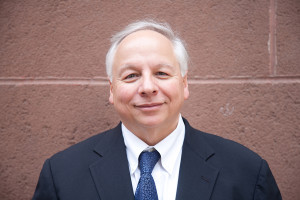We are planning for the future in the city of Boston, and not just with development projects along the Greenway or in the Seaport District. An initiative of Boston Mayor Martin Walsh in 2014, called Go Boston 2030, is a comprehensive master plan that will guide the Boston Transportation Department’s long-term vision. Leaders from the business community, institutions and Boston residents in every neighborhood are working together on the transportation element of the first citywide plan in 50 years. I am proud of the opportunity to be the co-chair of Go Boston 2030 in tandem with Boston state representative Russell Holmes.
This forecasting effort is essential, as Boston is currently seeing substantial growth in our population, workforce and overall economic activity. Between 2010 and 2014, the number of people living in Boston grew by 40,000 residents, an increase of 6 percent. Over this same four-year period, 45,000 more jobs have been created in our state capital. Our current transportation system is struggling to serve today’s riders, while projections show that additional capacity and targeted expansion projects are necessary to keep pace with expected job growth over the next 15 years. Finally, as we improve existing service, we must consider the effects of climate change and look for new strategies in energy use and limits on vehicle emissions.
Mayor Walsh understands these competing challenges and directed our group to follow these three guiding principles for Boston’s transportation policy: increase equity, enhance economic opportunity and improve our climate responsiveness. After a year of outreach and collaboration with Boston residents, Go Boston 2030 is now entering the action plan phase. We recently announced some primary aspirational goals and bold targets. To see the plan’s draft vision framework, visit goboston2030.org/en.
User-Friendly Travel
On the subject of transportation access issues, we want every Boston household to be within a 10-minute walk of a rail station, bus route, Hubway station or car-share location. Currently, only 42 percent of households meet this standard. If Boston can provide multiple travel options to residents, it can reduce the number of car-dependent residents.
Success in terms of our safety measures would mean a complete elimination of traffic fatalities in Boston. The campaign, called Vision Zero Boston, is focused on protecting walkers as well as collisions involving motor vehicles. The unfortunate current average is 18 traffic deaths each year in Boston. We believe Vision Zero Boston can reach zero fatalities through updated designs that value travel space for anyone who rides a bike, walks, takes public transit and drives in a car. Safety-based designing at the municipal level will allow all these modes to collectively prosper through wider sidewalks, smarter signals for road crossings and protected bike lanes.
In the next few years, we can make traveling throughout Boston more reliable too, as Boston adopts the use of new technologies. Boston is partnering with the smartphone app service Waze to share information on road closures and delays. Drivers using Waze will automatically learn the best traffic routes in real time, while the city of Boston can better understand best practices from the company on aggregate traffic data. Being smarter with recorded information can lead to consistent travel times for anyone moving throughout the city.
Another key element of Go Boston 2030 is related to our expectations of the MBTA. Residents, commuters and visitors all depend on our distressed transit system. Sometime we forget that reliable transit service is equally important to car drivers due to the level of congestion on roads. Our aspirational target for MBTA service is that riders will only experience delays 10 percent of the time. The MBTA and Boston Transportation Department can review on-time performance records of every mass transit option and consider actions at the transit and city-level that can improve the reliability of each transit service option.
Go Boston 2030 is a transportation blueprint; however, we can’t solve the financial challenges of the MBTA and the rest of the transit system. Our hope is a debate on a comprehensive transportation funding plan will take place at the state level in the next year. While we all focus on making our existing transportation infrastructure more efficient, it is also clear that additional resources will be necessary to meet Go Boston 2030 aspirational goals and develop a 21st century comprehensive statewide transportation system.
Rick Dimino is president and CEO of A Better City.




 |
| 


